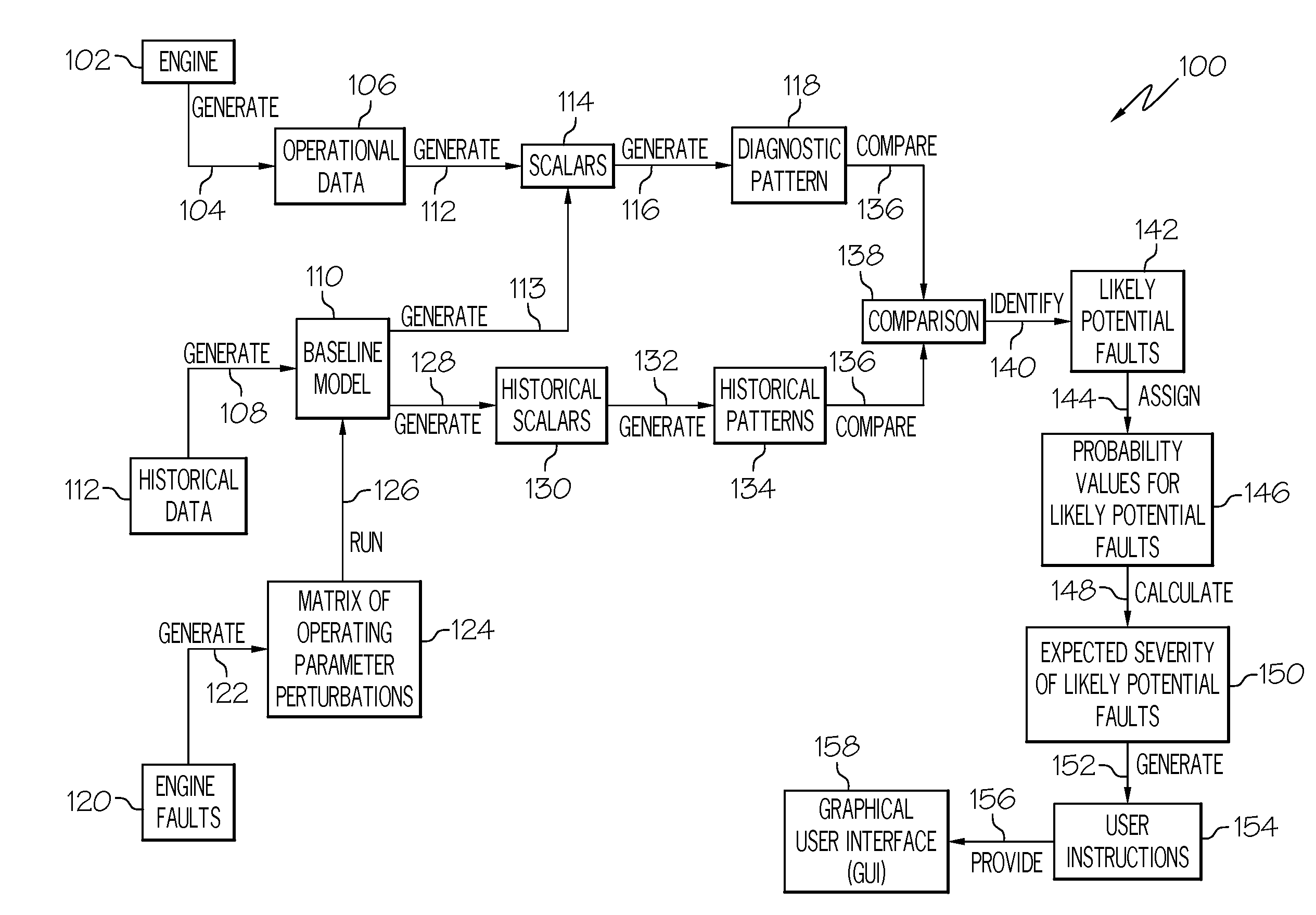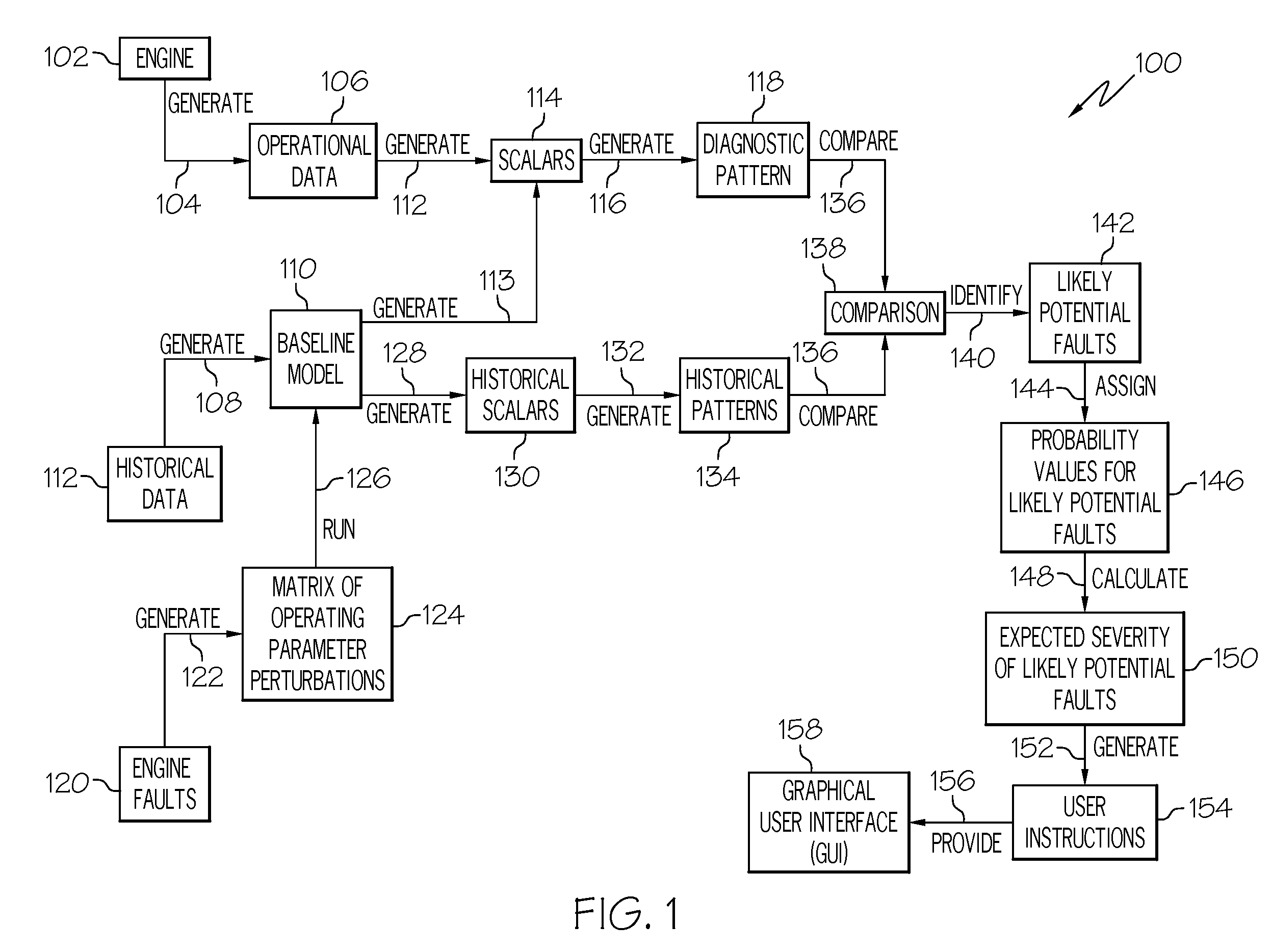Automated engine data diagnostic analysis
a technology of engine data and diagnostic analysis, applied in the direction of instruments, testing/monitoring control systems, process and machine control, etc., can solve the problems of time delays and/or other costs of time and/or money, experienced engineers may not be readily available to assess the fault root, test cell technicians may not possess the expertise or experience to perform fault isolation and repair efforts in an efficient and optimal manner,
- Summary
- Abstract
- Description
- Claims
- Application Information
AI Technical Summary
Benefits of technology
Problems solved by technology
Method used
Image
Examples
Embodiment Construction
[0021]Before proceeding with the detailed description, it is to be appreciated that the described embodiment is not limited to use in conjunction with a particular type of turbine engine, or to turbine engines in general. Thus, although the present embodiment is, for convenience of explanation, depicted and described as being implemented in connection with a turbine engine, it will be appreciated that it can be implemented in connection with various other devices, systems, and / or environments.
[0022]FIG. 1 depicts an exemplary embodiment of a diagnostic process 100 for diagnosing potential faults reflected in operational data 106 for a turbine engine 102 undergoing testing. As depicted in FIG. 1, the diagnostic process 100 begins with step 104, in which the operational data 106 is generated. The turbine engine 102 may be undergoing testing because it has been recently manufactured, repaired, or overhauled, or for any one of a number of other reasons. The operational data 106 preferab...
PUM
 Login to View More
Login to View More Abstract
Description
Claims
Application Information
 Login to View More
Login to View More - R&D
- Intellectual Property
- Life Sciences
- Materials
- Tech Scout
- Unparalleled Data Quality
- Higher Quality Content
- 60% Fewer Hallucinations
Browse by: Latest US Patents, China's latest patents, Technical Efficacy Thesaurus, Application Domain, Technology Topic, Popular Technical Reports.
© 2025 PatSnap. All rights reserved.Legal|Privacy policy|Modern Slavery Act Transparency Statement|Sitemap|About US| Contact US: help@patsnap.com



